Abstract
Vincent Van Gogh made a significant influence on the art of the 20th century. This researcher has also been influenced by Vincent Van Gogh and wanted to learn more about him. A historical study began to explore Vincent Van Gogh’s depression and his artistic production throughout his close relationship with Gauguin, another artist of his time. Vincent Van Gogh had a miserable childhood and was described as a mostly unstable child with emotional problems. It was the time between 1860 and 1880 that he was most productive when he finally decided to become an artist after he had seen and experienced much in life.
In describing the mutual friendship and artistic relationship between Vincent Van Gogh and Gauguin, it will be noted that Gauguin greatly admired Vincent Van Gogh’s paintings. Later they became close to each other for they could relate their shared desire to give a new form to their imaginations as artists struggling to earn a name in the highly confounding impressionist art form. After many cooperative efforts by both artists, problems soon arose due to basic differences in their personalities. It is possible that the stress of this relationship caused an increase in Vincent Van Gogh’s mental disorders.
Throughout this thesis, the researcher will review Vincent Van Gogh’s talent, which was what made him immortal. The question of the influence on the work of his relationship with Gauguin and possible mental illness will be investigated and discussed. Even though the themes of his work were sometimes somber, Vincent Van Gogh’s paintings reflected hope and happiness. The research method adopted in this thesis follows a historical framework.
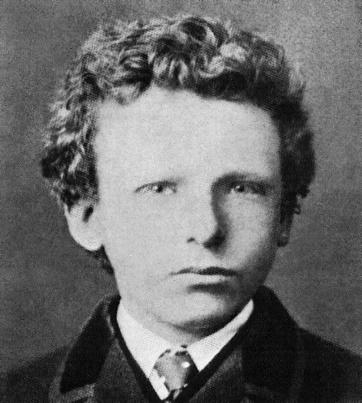
Introduction
Vincent Van Gogh was born in Groot-Zundert, the Netherlands, on March 30, 1853. The works of this well-known Dutch painter are notable for the emotion, beauty, and color that influenced 20th-century art. However, it is believed that he suffered from several mental illnesses (Naifeh & Smith, 2011). He did not attain notoriety until after his death and thus remained poor throughout his life. He died in France on July 29th, 1853, at the age of 37. The cause of his death was a self-inflicted gunshot wound. As a saying goes, “morning shows the day”, which means if the beginning is good, then the end result will also be good, so it was with Vincent Van Gogh’s talent. He drew early as a child and ended up as a famous artist, after struggles with mental illness, which may have caused his death (Naifeh & Smith, 2011).
Although Vincent Van Gogh died young, he was a prolific painter, and his life of probable mental illness and unsuccessful relationships is of interest to this writer, who is studying to become an art therapist. Vincent Van Gogh’s two strongest relationships seem to have been with his brother, Theo, and with Paul Gauguin, a contemporary artist. Van Gogh and Gauguin are known as two of the most influential artists of their era. They learned a lot from each other even though their collaboration was not long. Later, there was some competition and friction between them. They differed in views. Where Gauguin supported abstract art, Vincent Van Gogh supported the reality of the world. Their collaboration ended dramatically around Christmas Eve, 1888, followed by a series of violent incidents (Greenberg & Jordan, 2001)
Literature Review
Life of Vincent Van Gogh (1853-1889)
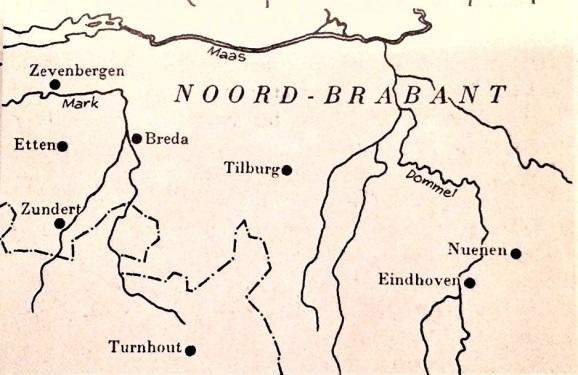
Vincent Willem Van Gogh, usually known as Van Gogh, was born in Groot-Zundert, Holland, on March 30, 1853. Vincent seems to have been affected mentally by the fact that his father was a pastor, making him a mostly unstable child with emotional problems. During his childhood, he was
perceived as a reticent child and while he attended the Zundert village school, he was taught by a Catholic tutor along with 200 other students. After that, he was home tutored with his sister for a while before he joined Jan Provily’s boarding school at Zevenbergen. Though he resented leaving the pleasant ambiance of home, it was only when he went to a new middle school, Willem II College in Tilburg, that he encountered Huysmans, a renowned artist from Paris who later helped him to cultivate an interest in art (Naifeh & Smith, 2011).
Huysmans helped Vincent Van Gogh understand the nuances of painting and helped him grasp the concepts by having a concise and structured perception towards art. It was clear that since his childhood, Vincent Van Gogh had an early inclination towards painting and he eventually created 2100 artworks comprised of oil paintings, watercolors, art, sketches, and self-portraits which vouch for his talent. As mentioned in the book “The letters of Vincent Van Gogh” (Van Gogh & Leeuw, 1997), Vincent Van Gogh himself reflected on his abrupt withdrawal from school, as he wrote to his older brother Theo that “My youth was gloomy and cold and sterile” (Naifeh & Smith, 2011, p. 42).
During the time between 1860 and 1880 when Van Gogh finally decided to become an artist, he had already seen much in life. His experiences included two failed romantic relationships and stints at odd jobs that were mostly unsuccessful such as becoming a clerk in a bookstore. He tried working as an art salesman, and even as a preacher in Belgium in 1869; there he was not given much regard because of his bizarre behavior (Stein, 1986) which included episodes of depression and acting out behaviors.
Van Gogh is thought to have suffered from a combination of physical and mental disorders. One of them was Bipolar disorder formerly referred to as a manic depression. Besides, Van Gogh experienced seizures which were caused by temporal lobe epilepsy, according to his doctors. His manic personality is thought to be the source of his extreme enthusiasm for religion and art. Moreover, it is recognized as the cause of his incredibly fast art production. His massive collection of over 800 letters was attributed to a condition called Hypergraphia, a disorder linked to mania and epilepsy, where a person needlessly writes continuously (Naifeh & Smith, 2011).
Van Gogh’s mind was occupied by beauty while he practiced painting in Belgium. His works are subtle and filled with light. A good example is the painting called “The Potato Eaters” that was created in 1885 and brought much recognition to the artist. Van Gogh was influenced by the style of Rubens and the Japanese still life which he traveled to see in Antwerp (Naifeh & Smith, 2011).
Naifeh and Smith (2011) reveal the changes in the life of Van Gogh after he started to develop his impressionist style and re-invent the dimensions of art Vincent Van Gogh’s paintings and his talent made him immortal. Even though he was somber, his paintings reflected hope and happiness (Naifeh & Smith, 2011). The greatest achievement of the genius that Vincent Van Gogh was that his art was ahead of its time. Even when it was ridiculed, it rendered a new definition to painting and gave him an iconic status much later (Naifeh & Smith, 2011).
Relationship with his brother
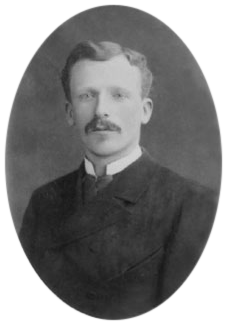
Vincent Van Gogh was extremely close to his brother Theo, whom he believed to be his confidante. In 1886 Vincent moved to Paris where he lived with Theo who was the manager of Goupil’s gallery. Theo tried to understand the deep-seated melancholy that possessed Vincent which was revealed in the book of their letters to each other, Dear Theo: The Autobiography of Vincent Van Gogh (Van Gogh & Stone, 1995). In these letters to his brother, Vincent disclosed the pain and inner conflicts that affected him throughout his life. In the book, it is explained how Theo was so close to Vincent Van Gogh that Theo himself died soon after Vincent. Van Gogh’s last words were directed for his brother, as he said “The sadness will last forever” (Van Gogh, 2003, p. 1154).
Relationship with Paul Gauguin
Vincent Van Gogh was highly influenced by Gauguin. Paul Gauguin had been very impressed by Vincent Van Gogh’s exceptional talent when he first came upon Vincent’s work (Naifeh & Smith, 2011). The story of how their friendship developed is very interesting.
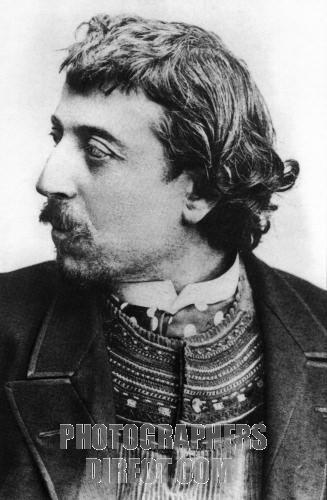
They met when they were both living in Paris. Gauguin was struck by one painting in an exhibition, Van Gogh’s Two Sunflowers, which is a beautiful blend of colors and techniques and an example of an Impressionist painting. This painting was the beginning of Vincent’s encounters with nature. A closer look at it will reveal the impact of Gaugin and other Impressionists of the time such as Monet – the colors and the blurry and flowing nature of the objects, the bright light, and very short brush strokes.
It is visible how strongly the artist was influenced by his outstanding contemporaries. Not only his style but the subjects were adapted from the works of the Impressionists – flowers, well-lit sceneries, still lives. He also painted things he loved both for their natural beauty and their symbolic significance (Naifeh & Smith, 2011).
Gauguin loved Vincent Van Gogh’s sunflower painting and Gauguin bartered for this with his best work By the Shore of the Lake, painted in Martinique which vouched for his adoration for the work (Jansen & Van Gogh, 2007). These men developed a friendship and were close to each other for they could relate to their inexplicable desire to give a new form to their imaginations as artists and also as people struggling to earn a name in the highly confounding Impressionist art form (de Leeuw, 2006). Van Gogh and Gauguin even found an art school together but it did not work out as expected.
After Gauguin and Van Gogh agreed to work together, they traveled to the south of France, and bought the yellow house in Arles in early 1888, in the Provence section of France, and began working on the house (Naifeh & Smith, 2011). They both visited the home of Jean Courbet, a leading painter of that time, who also lived in Provence, to view his work which they admired deeply (Naifeh & Smith, 2011). Soon, problems arose between the two due to differences in the nature of their personalities (Naifeh & Smith, 2011).
Gauguin was very dominating and planned to leave Van Gogh. This was very stressful for Van Gogh and may have been the cause of the many mental problems he suffered during the rest of his life. For instance, the well-known incident where Van Gogh used a razor to mutilate his ear in December 1888 can be considered as an act of self-harm caused by emotional overwhelming. Such behaviors are common for people with bipolar disorder. Physically, he recovered speedily and was taken home, but still suffered from hallucinations of being poisoned, and had other symptoms of mental illness (Greenberg & Jordan, 2001).
Later in 1889, Van Gogh committed himself to a mental asylum in St. Remy and ended his friendship with Gauguin. He did many paintings in St Remy such as Olive Trees against a slope of the hill, corner in the garden of the hospital, Starry Night, Old Man in Sorrow, and Road with Cypress and Star. He left the asylum in 1890 and moved to Auvers-Sur-Oise to continue his treatment. These were the last days of his life. He suffered from hallucinations for many months although he had some clear times which he used to draw and work (Greenberg & Jordan, 2001)
It was on the unfortunate day of 27 July 1890 that Van Gogh committed suicide by shooting himself in his chest; he died the following day after his wound became infected. It is believed that his mental anxiety and extreme seclusion from the world might account for his demise (Gayford, 2006).
Van Gogh’s life was very short – he died at 37 years old, after creating more than 900 paintings and 1000 other works of art. Van Gogh managed to sell only one painting (“The Red Vineyard”) throughout his career. He earned 400 Francs for it just a few months before his death. However, his art and style were admired after his death and are still considered among the great works of art. Van Gogh’s paintings now cost millions of dollars. Van Gogh’s most striking works were created in less than three years but his style was individual and inimitable and that made him stand out as a genius. His paintings were exhibited in Paris and Brussels. This way, Van Gogh’s art begun to gain the recognition and attention of art connoisseurs and critics only after the artist had passed away (Stolwijk & Thomson, 1999).
Figure 5 is a timeline showing the important events during Vincent Van Gogh’s life along with important events that were happening in the world at the same time
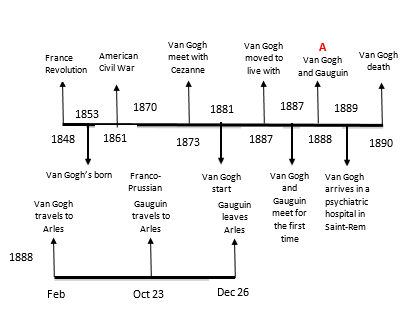
Historical Background
It is believed to be important to describe the background of what was happening in the world, and in the artistic community, especially in France, during the period when Van Gogh was alive and living and working in France and other parts of Europe. The three most important world history events were the French Revolution, the American Civil War, and the Franco-Prussian war in Europe.
1848 French Revolution
Soon before the birth of Van Gogh, civil war broke out in Europe, specifically the French Revolution which had an impact on everyone’s lives. The French Revolution is also commonly called the February Revolution and lasted from 23rd February until 2nd December 1848. The civil war was an uprising that had grown in the minds of the men of Europe so they could overcome the monarchy and rule their own lives.
This was mainly due to the dissatisfaction with the political scenario, the desire for freedom of the press, and the need for the people to look after and participate in the law-making and government policies. These civil uprisings broke out through Europe and we’re not always successful, but in France, it led to a new and free country. The rule of Louis-Phillippe was put to an end and thus was born the French Second Republic which was led by Louis Napoleon (Tocqueville, 1986).
1861 American Civil War
In 1861, eleven states in the United States wanted to secede from the union of states and form their own confederate American country. The United States government did not want them to secede. The Civil War began and continued for four years.
No foreign countries came to help the eleven states of the confederacy. Although the war took place in the United States in North America, the events in America influenced life in Europe since the union decided to blockade the Confederate seaports which supplied cotton and other material into Europe. As the war progressed and more territory fell into the power of the Union, the blockade became an international issue. Although the eleven seceding states tried to form their own country, the power of the Union was too strong and the United States remained as one nation (Keegan, 2010).
Franco-Prussian War (1870-1871)
Soon after the American Civil War, France lost an important war to Prussia against Germany. The main cause of this war was the unification of Germany. Prussia was grasping power in the southern provinces of Germany and France wanted compensation in Belgium in order to maintain the balance of power in Europe. The French army had a handful of people against a large number of people of Prussia. The war lasted a long time and had a series of battles. The influence of the French empire ended and unified Germany was formed which created a balance of power in Europe and the formation of the French Third Republic (Howard, 2001).
Influence of the Political Scenario on Van Gogh
It goes without saying that growing up in the conditions of ongoing political conflicts Van Gogh was under constant pressure. First of all, in times of economic instability the families start to push their children into careers they deem the best, the safest, and the most profitable. Van Gogh started to be disconnected from his family at a very young age due to his failure to perform successfully in the career fields they chose for him such as teaching, religion, and sales (Butterfield, 2011).
Economic instability led to the growth of the gap between the rich and the poor in Europe. Working as a missionary, Van Gogh often engaged in communication with the poorest population and happened to adopt their worldview starting to believe that religion was irrelevant to reality (Butterfield, 2011). Van Gogh’s sympathy towards the lower class people (peasants, miners, prostitutes) resulted in conflicts with his family but made a positive impact on his art. The art of Impressionism that affected Van Gogh’s style so much derived from the dire historical environments as an opposition to the depressive reality with the help of non-sentimental themes, bright light, and cheerful colors.
Influence of other artists
During his time in Paris in 1886, Van Gogh happened to meet many outstanding artists such as Cormon, Cezanne, Pissarro, Monet, and Gauguin, from whom he learned various art techniques making slight changes in his own style and adapting to the world of the Impressionists (Naifeh & Smith, 2011).
Paul Cezanne (1839-1906)
Paul Cezanne’s work laid the foundation for Post-Impressionist painting in France. Paul Cezanne met Van Gogh in 1873. Cezanne’s work initially was disliked by the public and a lot of fellow painters because he was influenced by Pissarro’s Impressionist style. Nevertheless, Paul Cezanne is considered one of the greatest revolutionary artists of the late 19th and early 20th centuries. He worked with thick layers of pastel and simple shapes (Van Gogh & Powell, 2003).
Henri De Toulouse Lautrec (1864- 1901)
When Van Gogh moved in with his brother Theo in Paris in March 1886 he met Henri de Toulouse Lautrec in Cormon’s studio where Lautrec drew Van Gogh’s painting in pastel. Lautrec was born in 1864 at Albi. He was a very famous draftsman who liked to work on cardboard. He created 737 canvases, 275 watercolors, 363 prints and posters, 5,084 drawings of some ceramic and stained glass work in 20 years. Lautrec and Van Gogh later met again at Julien Pere Tanguy’s paint store in order to view Paul Cezanne’s painting. Cezanne and Van Gogh worked together for two years.
Cezanne’s impact is visible in Van Gogh’s still lives and fruit paintings, the two painters share similar vague impressionistic oils with hesitant edges and flickering colors. Besides, Van Gogh had a lot in common with Lautrec – they both were deeply moved by the Japanese of art with its thin and curvy lines, and complex figures. However the brief friendship between these artists dissolved fast and Lautrec didn’t hear from Van Gogh after that (Van Gogh & Powell, 2003).
Edouard Manet (1832-1883) and Henri Matisse (1869- 1954)
It was in Paris where Van Gogh met many other French painters like Henri Matisse and Edouard Manet. These artists drew and painted many floral still lives, which influenced Van Gogh. Edouard Manet’s work showed a connection between realism and post-impressionism. As the Prussian war approached, Manet joined the army and moved his family away from Paris. Manet died early in 1883.
Henri Matisse was born in a middle-class family and wanted to study law. He and Van Gogh used the same technique of painting. They also both used the bright yellow color, and other bold, vivid colors to make a lot of floral paintings. Matisse was interested in post-impressionism and studied the works of Van Gogh and Paul Cezanne (Spurling, 1998).
Pierre-Auguste Renoir (1841- 1919)
Renoir was a leading painter in post-impressionism and his basic subject of study became female. He was inspired by dark colors and was in close acquaintance with Claude Monet who had similar reflections. Renoir had a series of best 181 paintings that have been reproduced often (Krell & Manet, 1996).
Jean Gustave Courbet (1819- 1877)
In October of 1888, Gauguin and Van Gogh agreed to work together and decorate the yellow house when they arrived in Arles. During this time they both visited the work of Jean Courbet, a leading painter of that time, and viewed it seriously. The work of Jean Courbet was very highly appreciated by Van Gogh and Henri De Toulouse Lautrec. Courbet was a painter by birth and drew from quite an early age, using his sisters as subjects. He painted landscapes, still lives and sea scopes, and social issues. Courbet was a leading reformer being appreciated by other fellow workers. (Van Gogh & Powell, 2003; Poulet & Arts, 1979).
Depression
As a concept, depression is divided into a common feeling such as “blues” or “sadness” and clinical depression that requires medical treatment and the help of a professional. Depression, just like all other psychological and mental disorders is recognized as a clinical issue when it starts to make a serious negative impact on the everyday life of an affected individual (National Institute of Health, 2013).
Causes of Depression
The scientists still argue whether depressions are inflicted from within or from without. Overall, the nature of depression is not understood entirely and it is considered multi-factorial. Some experts state that depression occurs due to genetic factors, others maintain that it develops because of external factors (Raynor, 2013). The theory that depressions may run in families comes from the perspective that if a child tends to witness a parent suffering from depression, become likely to develop a depression of their own over time. As for the environmental causes of depression, they are numerous.
For instance, depressions may appear because of sudden changes in one’s living conditions or habitual environments. Besides, shocking stressful situations (both prolonged and short) may also cause depressions, especially if they occur at a tender age (childhood or teenage). Other traumatizing events are conflicts and losses, lack of stable support from close ones, other personal problems, alcohol and substance abuse (Raynor, 2013).
Van Gogh’s Mental Illness: Was it Depression?
Van Gogh suffered from some severe active mental disorders which are now thought to have been periods of depression which led him to risky behaviors such as smoking, drinking, trying to cut off his ear, and finally suicide. Such examples of depression along with the dynamic stages of over-enthusiasm he showed frequently as an artist are now considered mostly to have been bipolar disorder (Bush, 2014). There were various incidents that demonstrate Vincent Van Gogh’s depression:
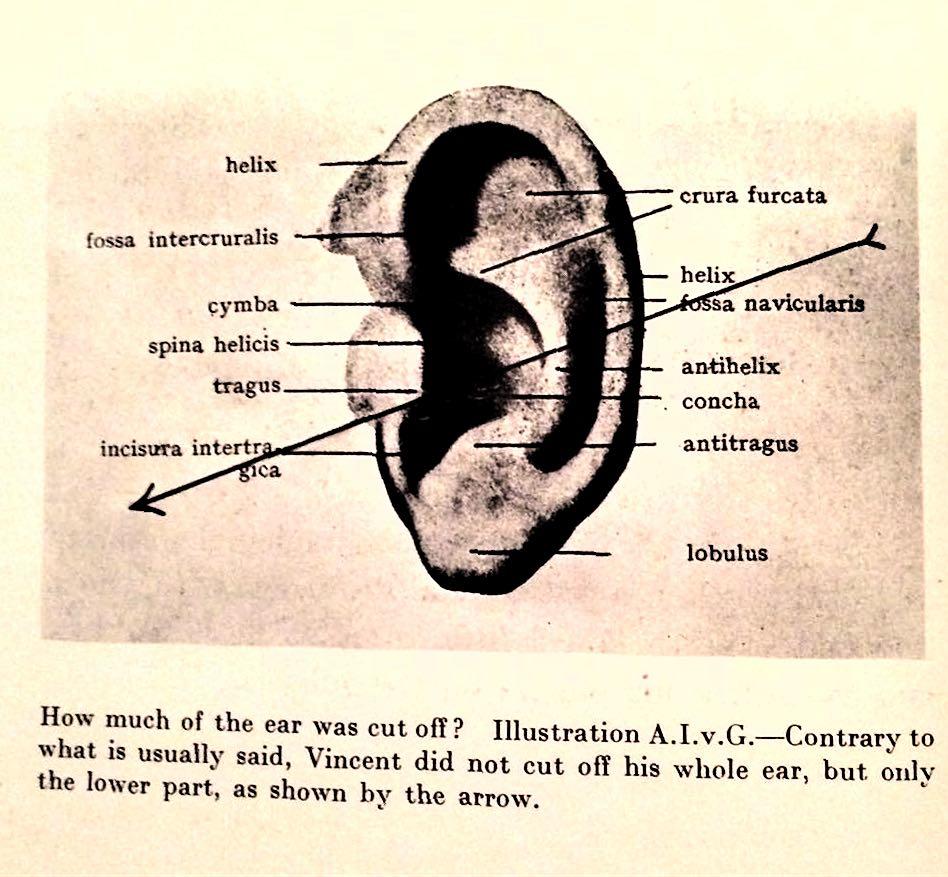
On 23rd December 1888, Van Gogh tried to cut off his ear after running to Gauguin with a razor after Van Gogh had been informed of Gauguin’s decision to leave. This act of mutilation was thought to be mostly due to the depression he suffered at night and he even tried to give his ear to a prostitute, with whom might he have had a relationship. Van Gogh was later found by local police almost bleeding to death (Heenk, 2013).
In February 1889, the local residents of Arles complained to the authorities that Van Gogh should be placed in an asylum on account of his mental conditions and the depression he was suffering. As a result, Gogh was locked up without books, paintings, or even his pipe.
Later in May of the same year, Van Gogh turned himself into the asylum at Remy and was allowed to paint. This activity decreased his hallucinations and paranoid behavior. This might be is the first historical example of art therapy (Bush, 2014).
Other indicators that he might have had bipolar disorder can be seen if we carefully examine Vincent Van Gogh’s life history where it can be easily noted that Vincent Van Gogh’s life was separated into different periods. The first period was the one in which he showed great enthusiasm and excitement towards his religion. He flourished in his art and did a wide range of paintings, whereas the later periods were sad, depressing, and exhausting for him. Later, he dedicated most of his time to smoking and drinking which finally lead to extreme depression and his suicide. Thus the understanding of bipolar disorder or maniac depressive disorder can provide a great source of understanding about Vincent Van Gogh’s life (Hulsker & Miller, 1990).
Other possible causes of mental and physical illness
Temporal Lobe Epilepsy
Epilepsy was a common disease during Vincent Van Gogh’s lifetime. Vincent Van Gogh himself thought that he might be suffering from epilepsy. Dr. Felix Rey and Dr. Peyron supported this diagnosis. Van Gogh was diagnosed with a brain lesion. His doctors believed this, as well as his epileptic condition, was caused by his alcohol abuse. Dr. Gachet, one of Van Gogh’s physicians, treated his illnesses using digitalis that is known to make people see yellow spots. This explains why Van Gogh described yellow as his favorite color (Ford, 2014).
Thujone poisoning
In order to cope with the painful outcomes of epilepsy and depression, Van Gogh developed a habit to drink absinthe, a drink that was cheap and rather toxic. Thujone is present in Absinthe which might have increased Vincent Van Gogh’s mental illness, depression, anxiety, and epilepsy. Many physicians even argue that Thujone also causes one to see things in yellow (Tralbaut, 1969).
Sunstroke
Vincent Van Gogh did most of his paintings outdoors and so had severe sun exposure. Such intense amounts of sun can do great damage to the brain and could have caused Vincent Van Gogh to also have many stomach problems (Tralbaut, 1969).
Hypergraphia
Hypergraphia is the condition in which one tends to write continuously. This can be very easily be seen in the 800 letters written by Vincent Van Gogh to his brother in a brief period of 20 years (Meekeren, 2003).
Lead Poisoning
Van Gogh’s paints he used to create his art contained small doses of lead, and the painter had a habit to nibble on the chips of paint. He had many of the symptoms typical of lead poisoning such as anemia, stomatitis, and abdominal pain as well as signs of radial neuropathy. He even tried to commit suicide by drinking his paints. Van Gogh’s painting called The Starry Night demonstrates one of the distinct symptoms of lead poisoning – seeing the objects in circles or halos (Meekeren, 2003).
The conclusion to Literature Review
Vincent Van Gogh became a painter When he reached the age of 28, He was the oldest son of a Protestant minister. Van Gogh’s first job was as a gallery salesman in 1875 but he was not happy. He was moody with customers and two months later he quit the job. In 1886 he moved to Paris to live with his brother and happened to meet well-known artists such as Henri de Toulouse-Lautrec and Paul Gauguin. In 1888, Van Gogh traveled to the South of France, along with Gauguin.
The two could not live together harmoniously. Vincent Van Gogh tried to kill his friend Gauguin, and then he cut off a part of his own ear. The artist decided to admit himself to the asylum at Saint-Remy in 1889. He was insane and lonely; his rejection by Gauguin led to periods of depression. On the 27th of July, 1890, he attempted suicide and died in two days. However, during his short life-time, he completed over six hundred canvases, thousand drawings, and watercolors.
Methodology
In the second part of the thesis, I will analyze some of Van Gogh’s paintings and describe how they might illustrate different aspects of his mental illness. I will also describe how Van Gogh’s friendship with Gauguin was related to his art as well as his mental illness.
To understand particular processes and consider objects or concepts one is to maintain research. Of course, it should be based on authoritative information and proved with the help of a decent examination. Quantitative and qualitative research methods can be used to provide one with needed findings. The historical method is remarkable as it can include the collection of the variables that refer to both of them. The method can help to gain information about the origins, evaluate different theories dealing with the development or deepen in the life of well-known people.
The historical method of research is the one that includes the process of investigating the events that took place in the past and things that refer to it. These are not only significant dates and occasions that are of interest. The historical method is aimed at the explanation and interpretation of the peculiarities and personalities. It is an attempt to recapture what has happened some time ago. As a rule, this method is chosen when one wants to conduct research on the development of ideas or technologies, remarkable people or changes in society, etc.
When one deals with the historical method, he/she refers to the comparison. Within a particular period, various subjects can be collated with each other or the stages of the development of one subject. For example, it is possible to compare in what way the works of two artists altered due to the revolution or just to see and assess what has happened to one of them. The historical method is the main one in such kind of researches. It includes different techniques that the researchers use to gain the information. With its help, people can not only enhance their knowledge of previous events but also predict future ones (Sreedharan, 2007).
Both primary and secondary sources can be used to conduct the history research. Thus, it can be based on the information taken from original documents, remains periodicals, and textbooks.
To conduct the research using the historical method one is to remember the stages that are to be followed.
- Identify the phenomenon of the study. Of course, the subject of the research is to be current and interesting for the person who maintains it. To understand what is better to choose one can get background information based on secondary sources. Then a particular time, person, or concept can be easily selected.
- Develop hypothesis or questions to conduct the research. This stage is to help the researcher to concentrate on the topic and stick to it. All information will be collected taking into account what is to be examined or proved. Thus, the hypothesis or questions create some framework.
- Gain the information relevant to the topic. It is the most time- and labor-consuming stage. One needs to collect all possible data that can help to consider the subject. Some changes may be made in the hypothesis or research questions to improve them.
- Evaluate and analyze the data. The researcher describes the subject, provides the information about it, and points out what information misses and why. One accepts or rejects the hypothesis that was previously made or answers the questions. During this stage, conclusions are also made.
- Perform the findings and interpret them. It is the last stage that is aimed at the support of the conclusions. The researcher presents the results and explains them. Here he/she also points out what is to be investigated deeper (Given, 2008).
In my research, I will analyze the painting so several clusters of data will be investigated. Art analysis includes the information about the artist, date, location, influence on the works, and one’s techniques. All mentioned topics will be evaluated and supported with authoritative information.
First of all, I will concentrate on the artist’s personality. I will search for the data relating to the life of Vincent Van Gogh and describe his life. Important events will be highlighted and considered as the steps of his development as a person and painter.
Then I will concentrate on the period when he lived and the location. It will be a kind of historical background that will show the realities of life, their influence, and peculiarities of art. I will consider how the wars and revolutions changed the people’s interests in the art perspective.
To explain the way Vincent Van Gogh’s works were developing, I will include the information about other artists and explain how they influenced him, in what way they altered his paintings. I will distinguish the master’s techniques, investigate the way they changed, and compare them with the techniques of other artists.
I will compare the works of Vincent Van Gogh and Eugène Henri Paul Gauguin trying to find out a range of common and different things in their paintings. I will distinguish the themes they preferred and the reasons they chose them. I will also pay attention to such things as colors, brushwork, manners, etc.
I believe that in my study the historical method can be used, as it deals with the development of a person as an artist. It needs to consider the events and things through a long period of time. Moreover, a comparison of the development of two artists will be provided. Such aims are usually achieved with the help of the historical method, and my research is not an exception.
Reference List
Butterfield, B. (2011). The Troubled Life of Vincent Van Gogh. Web.
Bush, A. (2014). Vincent van Gogh: Everything you need to know. New York: Viking press
Dawe, F. (1976). Understanding Vincent Van Gogh (Pap. ed.). London: Pb5880.
Feist, J., & Feist, G. (2013). Theories of personality (8th ed.). New York: McGraw-Hill.
Ford, D., & Urban, H. (1963). Systems of psychotherapy: A comparative study. New York: Wiley.
Ford, P. (2014). Bipolar Disorder 196 Success Secrets: 196 Most Asked Questions on Bipolar Disorder – What You Need to Know. Brisbane-Australia: Emereo Publishing.
Gayford, M. (2006). The yellow house: Van Gogh, Gauguin, and nine turbulent weeks in Arles. New York: Little, Brown and Company.
Given, L. (2008). The SAGE encyclopedia of qualitative research methods. Thousand Oaks, CA: SAGE Publications.
Greenberg, J., & Jordan, S. (2001). Vincent Van Gogh: Portrait of an artist. New York: Delacorte Press.
Heenk, L. (2013). Van Gogh’s inner struggle: Life, work and mental illness. Oegstgeest: Amsterdam.
Howard, M. (2001). The Franco-Prussian War: The German invasion of France, 1870-1871. London: Routledge.
Hulsker, J., & Miller, J. (1990). Vincent and Theo van Gogh: A dual biography. Ann Arbor: Fuller Publications.
Jansen, L., & Van Gogh, V. (2007). Vincent Van Gogh, painted with words: The letters to Émile Bernard. New York: Rizzoli.
Keegan, J. (2010). The American Civil War: A military history. London: Vintage.
Krell, A., & Manet, E. (1996). Manet and the painters of contemporary life. New York, N.Y.: Thames and Hudson.
Meekeren, E. (2003). Starry starry night: Life and psychiatric history of Vincent van Gogh. Amsterdam: Benecke N.I.
Naifeh, S. & Smith, G. (2011). Van Gogh: The Life. New York: Random House.
National Institute of Health. (2013). What is Depression? Web.
Poulet, A., Murphy, A., & Arts, B. (1979). Corot to Braque: French paintings from the Museum of Fine Arts, Boston. Boston: The Museum.
Raynor, J. (2013). Causes of Depression: Biological, Environmental, Abuse, Genetics & More. Web.
Spurling, H. (1998). The unknown Matisse: A life of Henri Matisse 1869-1908. New York: Alfred A. Knopf.
Sreedharan, E. (2007). A manual of historical research methodology. Kudappanakunnu, Trivandrum: South Indian Studies.
Stein, S. (1986). Van Gogh: A retrospective. New York: Hugh Lauter Levin.
Stolwijk, C., & Thomson, R. (1999). Theo van Gogh: 1857-1891: Art dealer, collector, and brother of Vincent. Amsterdam: Van Gogh Museum.
Tocqueville, A. (1986). Recollections: The French Revolution of 1848. New Brunswick, NJ: Transaction Books.
Tralbaut, M. (1969). Vincent van Gogh. New York: Viking Press.
Van Gogh, V. (2003). Vincent van Gogh (English version. Ed.). London: Sirrocco.
Van Gogh, V. & Dorn, R. (2000). Van Gogh face to face: The portraits. New York: Thames & Hudson.
Van Gogh, V. & Leeuw, R. (1997). The letters of Vincent van Gogh. London: Penguin Books.
Van Gogh, V. & Powell, E. (2003). The letters of Vincent van Gogh to his brother and others, 1872-1890. London: Constable.
Van Gogh, V. & Stone, I. (1995). Dear Theo: The autobiography of Vincent Van Gogh. New York: Plume.